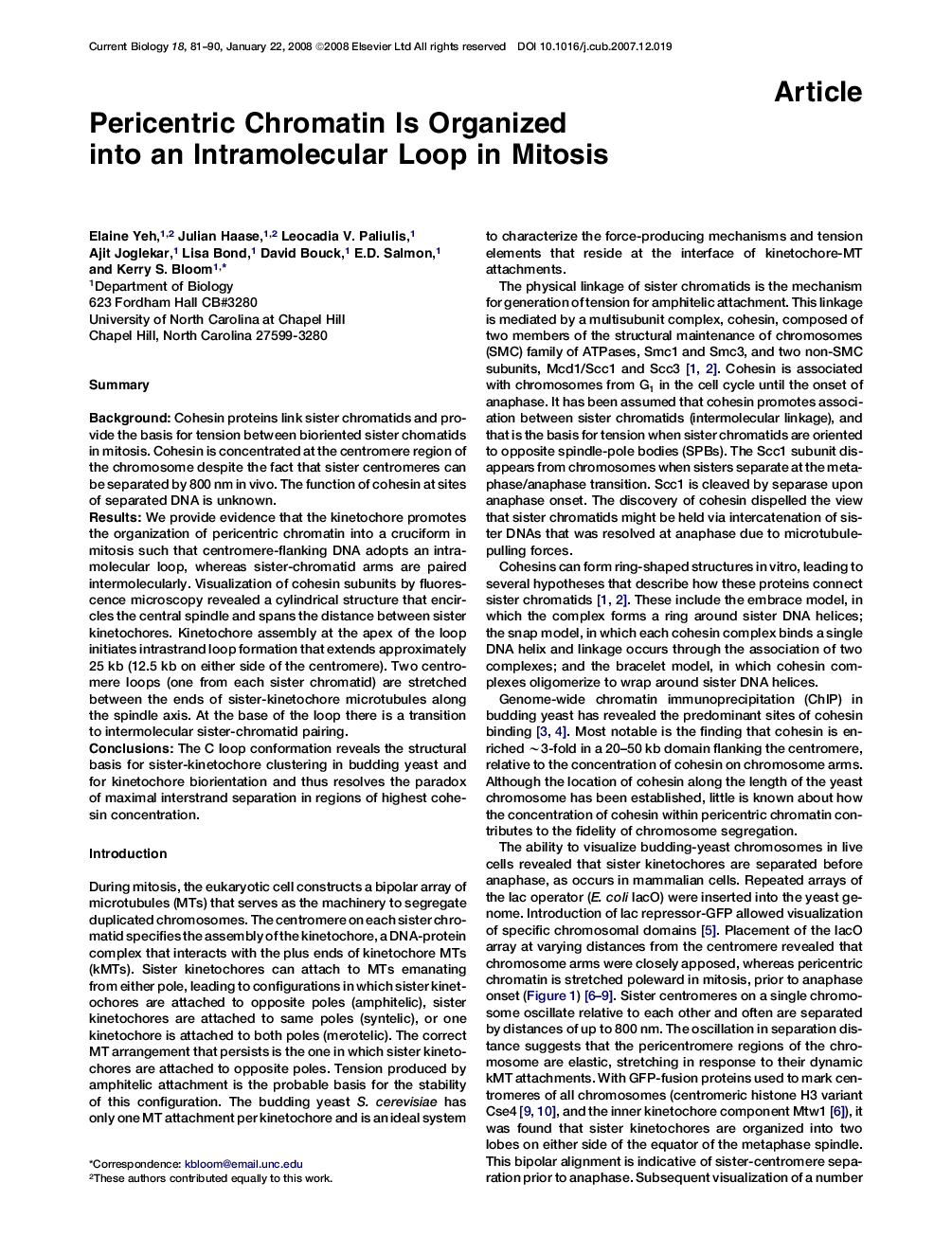| Article ID | Journal | Published Year | Pages | File Type |
|---|---|---|---|---|
| 2043730 | Current Biology | 2008 | 10 Pages |
SummaryBackgroundCohesin proteins link sister chromatids and provide the basis for tension between bioriented sister chomatids in mitosis. Cohesin is concentrated at the centromere region of the chromosome despite the fact that sister centromeres can be separated by 800 nm in vivo. The function of cohesin at sites of separated DNA is unknown.ResultsWe provide evidence that the kinetochore promotes the organization of pericentric chromatin into a cruciform in mitosis such that centromere-flanking DNA adopts an intramolecular loop, whereas sister-chromatid arms are paired intermolecularly. Visualization of cohesin subunits by fluorescence microscopy revealed a cylindrical structure that encircles the central spindle and spans the distance between sister kinetochores. Kinetochore assembly at the apex of the loop initiates intrastrand loop formation that extends approximately 25 kb (12.5 kb on either side of the centromere). Two centromere loops (one from each sister chromatid) are stretched between the ends of sister-kinetochore microtubules along the spindle axis. At the base of the loop there is a transition to intermolecular sister-chromatid pairing.ConclusionsThe C loop conformation reveals the structural basis for sister-kinetochore clustering in budding yeast and for kinetochore biorientation and thus resolves the paradox of maximal interstrand separation in regions of highest cohesin concentration.
